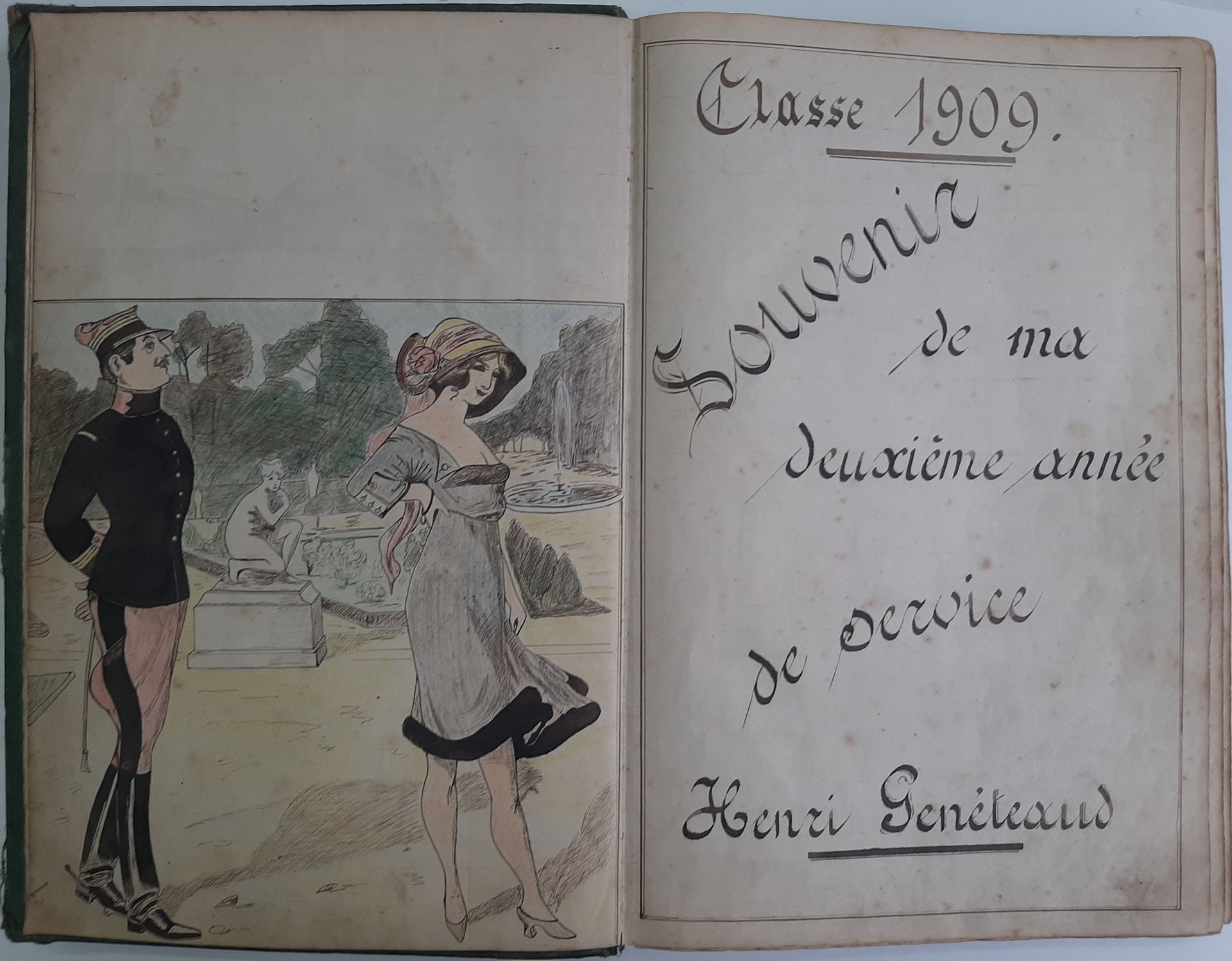Description
GENÉTEAUD (Henri). Class of 1909. Souvenir of my second year of service. In French, manuscript on paperFrance , 1911-1918 [2] ff.-355 pp.-[2] ff. (pages 328-341 and 344-355 are blank), 25 in-text illustrations in pen, black and red ink and coloured pencil. Bound in green percaline (period worn binding). The volume begins on "October 25, 1911 at 8 o'clock in the evening and still counting 329 [days]". It stops "At the defence office on September 19, 1912 at 7 p.m." ... But resumes briefly (ff. 320-327) with these two dates: "Done on March 2, 1918 at squadron 481 in Grayan while waiting for the class but when ?????"and "Done on November 6, 1918 hoping for the end of the war this year". Généteaud, to relieve his boredom, copied songs from the caf'conc and music hall repertoires of the time. Some of them were recorded, at the time or later, such as "Ma petite bonne" (Mayol) - "On est la vie" (We're not going to make it) (Mayol) - "On est en République" (Montéhus) - Bonsoir Madame la Lune (Fred Gouin) or " Aimer c'est pleurer " (Jean Lumière). Others recall some remarkable inventions of the beginning of the century, for example "Dans mon aéroplane" sung by Georgel, or "La Formule 606" sung by Paul Lack... a formula which treated venereal diseases, undoubtedly very useful for a soldier. The words and music of many of these songs are difficult to find today and this anthology contains many nuggets that will delight lovers of French song. Généteaud has illustrated his volume with scenes depicting military men on the prowl with naked young women.
62
GENÉTEAUD (Henri). Class of 1909. Souvenir of my second year of service. In French, manuscript on paperFrance , 1911-1918 [2] ff.-355 pp.-[2] ff. (pages 328-341 and 344-355 are blank), 25 in-text illustrations in pen, black and red ink and coloured pencil. Bound in green percaline (period worn binding). The volume begins on "October 25, 1911 at 8 o'clock in the evening and still counting 329 [days]". It stops "At the defence office on September 19, 1912 at 7 p.m." ... But resumes briefly (ff. 320-327) with these two dates: "Done on March 2, 1918 at squadron 481 in Grayan while waiting for the class but when ?????"and "Done on November 6, 1918 hoping for the end of the war this year". Généteaud, to relieve his boredom, copied songs from the caf'conc and music hall repertoires of the time. Some of them were recorded, at the time or later, such as "Ma petite bonne" (Mayol) - "On est la vie" (We're not going to make it) (Mayol) - "On est en République" (Montéhus) - Bonsoir Madame la Lune (Fred Gouin) or " Aimer c'est pleurer " (Jean Lumière). Others recall some remarkable inventions of the beginning of the century, for example "Dans mon aéroplane" sung by Georgel, or "La Formule 606" sung by Paul Lack... a formula which treated venereal diseases, undoubtedly very useful for a soldier. The words and music of many of these songs are difficult to find today and this anthology contains many nuggets that will delight lovers of French song. Généteaud has illustrated his volume with scenes depicting military men on the prowl with naked young women.
